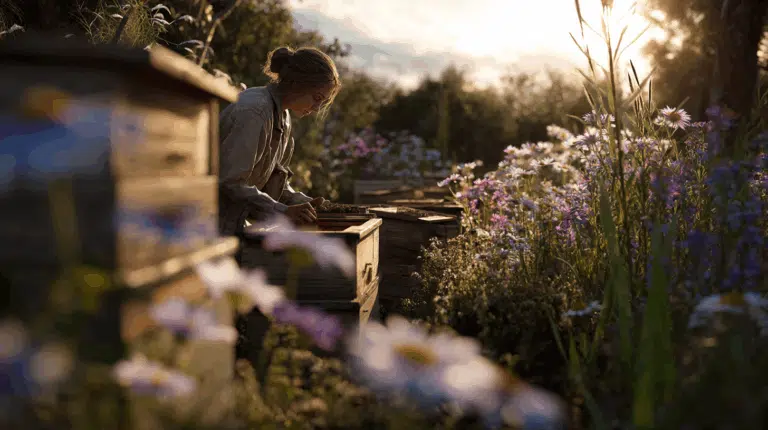Lisianthus is an elegant, long-blooming cut flower with rosette-shaped blooms in various colors. Perfect for bouquets and adding a soft, romantic charm to the vase.
With Lisianthus seeds from EasySeeds.eu, you can bring elegance and color to your garden and bouquets. Growing Lisianthus from seed as a cut flower is ideal for gardeners who want to enjoy luxurious flowers with a soft, delicate appearance. Lisianthus, also known as Eustoma , is known for its trumpet-shaped flowers in various shades, including white, pink, purple, lavender, and blue. The flowers have sturdy stems and a long vase life, making them perfect for bouquets, flower arrangements, and decorative arrangements.
Elegant flowers and diverse colors.
Lisianthus produces graceful flowers with double or single petals in pastel and bright shades. The flowers have a soft texture and add a luxurious touch to bouquets and borders.
Long-lasting blooms and longevity.
Lisianthus blooms from mid-summer to early autumn and retains its beauty long after cutting. This makes the flowers ideal for fresh bouquets and flower arrangements.
Easy-care and versatile,
Lisianthus is easy to grow and suitable for borders, flowerbeds, pots, and containers. Both novice and experienced gardeners can enjoy these elegant cut flowers.
Bee-friendly and ecological
The flowers attract bees and butterflies, which contributes to biodiversity and a healthy garden environment.
Cut flowers for bouquets – The sturdy stems and luxurious flowers make Lisianthus perfect for fresh bouquets and indoor flower arrangements.
Borders & flowerbeds – Add elegance, structure, and color to your borders with this unique cut flower.
Pots and containers – More compact Lisianthus varieties are ideal for pots, balcony boxes and patios.
Combinations with other cut flowers – Mix Lisianthus with Zinnia, Celosia, or Dianthus for a colorful and refined effect in bouquets and borders.
Sowing time – Sow indoors from January to March for early flowering; sow outdoors after the last frost.
Soil & Location – Use well-drained, nutritious seed compost and choose a sunny to partially shaded location.
Care – Keep the soil moist during germination and the early growth phase; feed regularly for strong, healthy plants.
Hardening off – Gradually acclimatise young plants to outdoor conditions before planting them out permanently.
Maintenance – Remove wilted flowers (deadheading) to prolong flowering and maintain healthy stems.
At EasySeeds.eu, you'll find a wide range of Lisianthus (Eustoma) seeds , selected for their germination rate, color variation, and flowering intensity. Whether you want to fill borders, embellish pots, or create luxurious bouquets yourself, our Lisianthus seeds will bring your garden and bouquets to life every season.
🌸 Discover our range now and order easily online – buy Lisianthus seeds at EasySeeds.eu!

Lisianthus, also known as Eustoma, is an elegant cut flower with soft, rose-like blooms and long, sturdy stems.
Eustoma is the botanical name and literally means "beautiful mouth" in Greek, referring to the graceful petals.
Yes, Lisianthus can be grown from seed, but it's a slow and delicate plant that requires care and patience.
Sow the seeds shallowly in moist, well-drained soil. Press lightly, but don't cover, as they need light to germinate.
The seeds germinate on average after 10–20 days at a temperature of 20–22°C.
Lisianthus ( Eustoma grandiflorum ) is usually grown in greenhouses, but it can also be grown outdoors under certain conditions. This provides protection from cold, wind, and rain, and better control over temperature, moisture, and light for optimal flowering. It also allows for early or continuous production.
This is because Lisianthus is sensitive to low temperatures and poor weather, meaning outdoor cultivation often carries the risk of delays or damage.
Market appeal: Lisianthus is loved for its rose-like beauty and elegant petals, making it a favorite among florists. Its long vase life and wide color palette make it versatile for a variety of floral designs, from formal bouquets to informal arrangements.
Cultivation: While lisianthus can be more challenging to grow than other flowers, the beautiful blooms are worth the effort. With proper care—such as well-drained soil, regular watering, and ample sunlight—the plant can thrive and produce abundant blooms.
Cut when the flower buds are just beginning to open; this will give the most beautiful blooms in a vase.
Cut the stems diagonally, remove the leaves below the water level, place them in clean water, and add flower food.